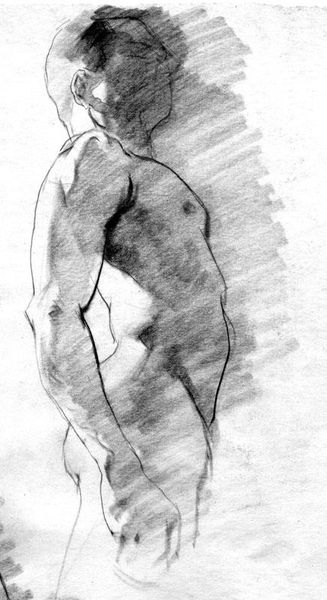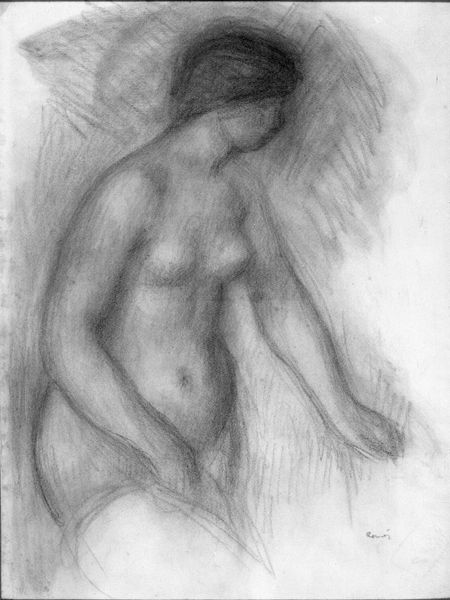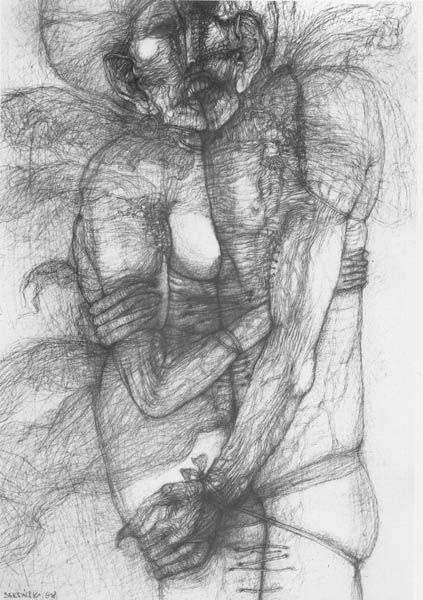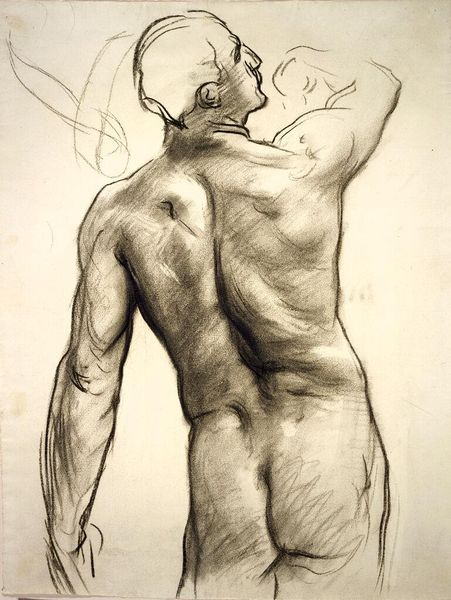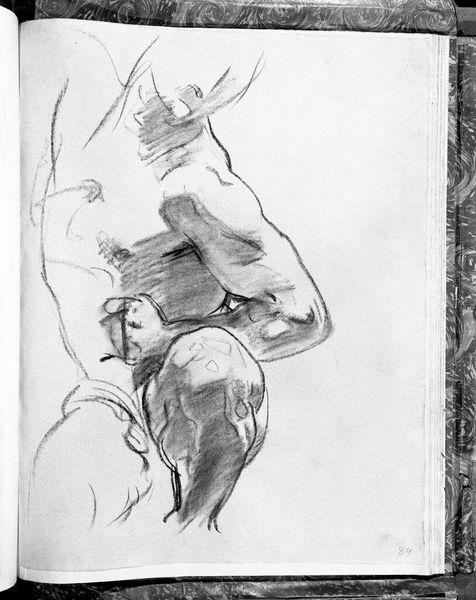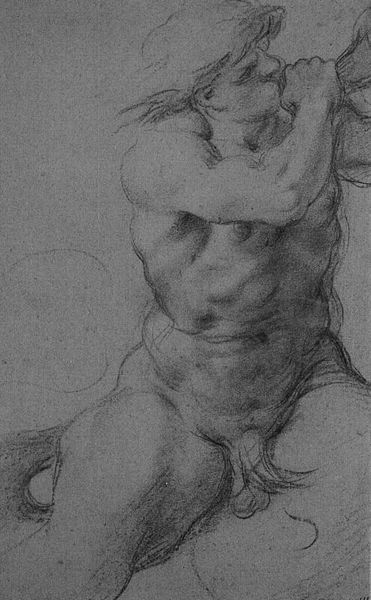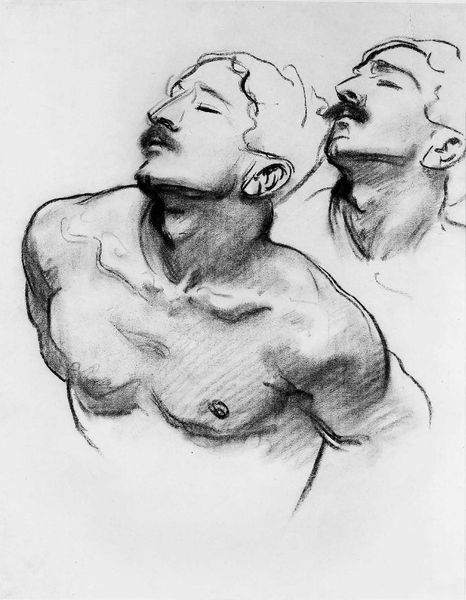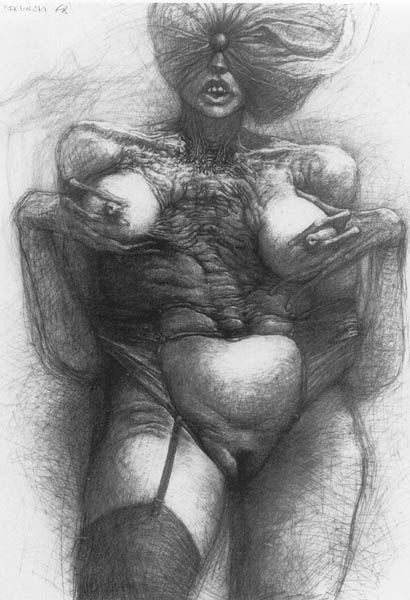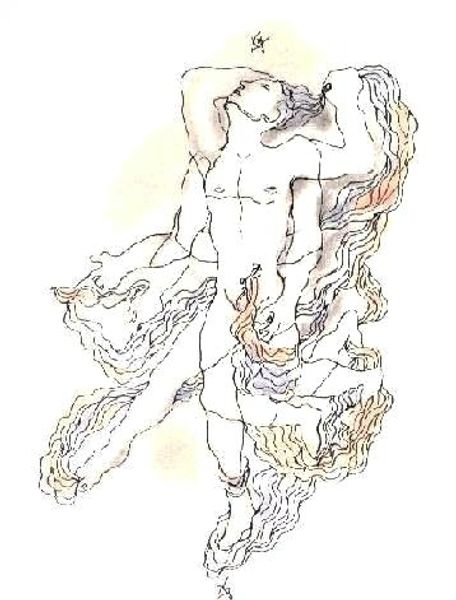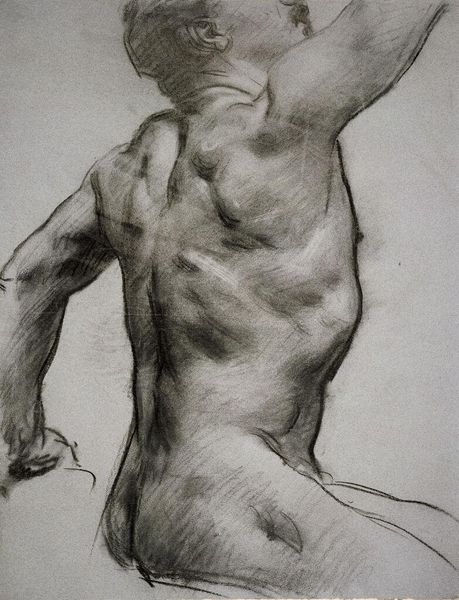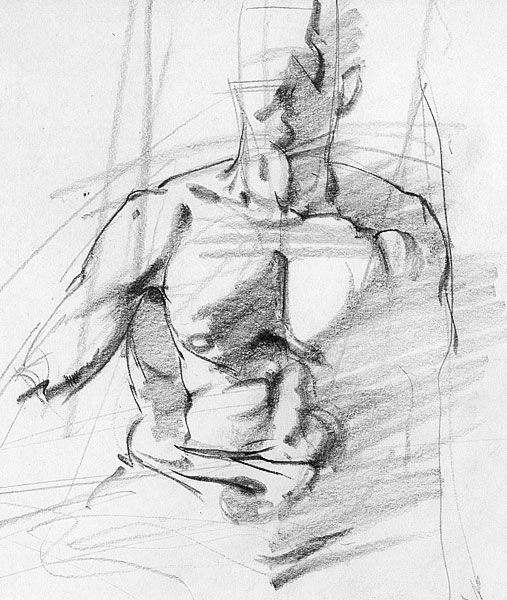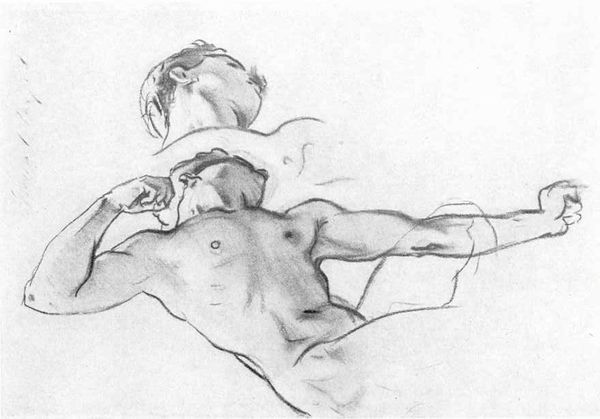
drawing, pencil
#
portrait
#
drawing
#
amateur sketch
#
facial expression drawing
#
pencil sketch
#
figuration
#
portrait reference
#
idea generation sketch
#
sketchwork
#
detailed observational sketch
#
sketch
#
pencil
#
rough sketch
#
portrait drawing
#
initial sketch
Copyright: Craig Mullins,Fair Use
This sketch by Craig Mullins depicts a male torso, rendered with stark contrasts of light and shadow, evoking a sense of raw, untamed power. The classical ideal of the male form has been a potent symbol throughout history, from the Greek statues of gods and heroes to Renaissance masterpieces. This representation taps into a deep well of cultural memory, resonating with notions of strength, virility, and the human potential for greatness. Yet, the figure is fragmented, incomplete, shrouded in shadow – a reminder that such ideals are often unattainable, existing only as aspirations or projections. Consider the raised arm; a gesture found in countless depictions of triumphant figures, from ancient emperors to revolutionary leaders. It is a visual shorthand for dominance and control. But here, the gesture feels ambiguous, perhaps even defensive. This ambiguity invites us to question the narratives of power we have inherited, to explore the anxieties and uncertainties that lie beneath the surface of idealized forms. The power of images lies not only in their ability to represent, but to evoke and provoke, engaging us in an ongoing dialogue with the past.
Comments
No comments
Be the first to comment and join the conversation on the ultimate creative platform.
